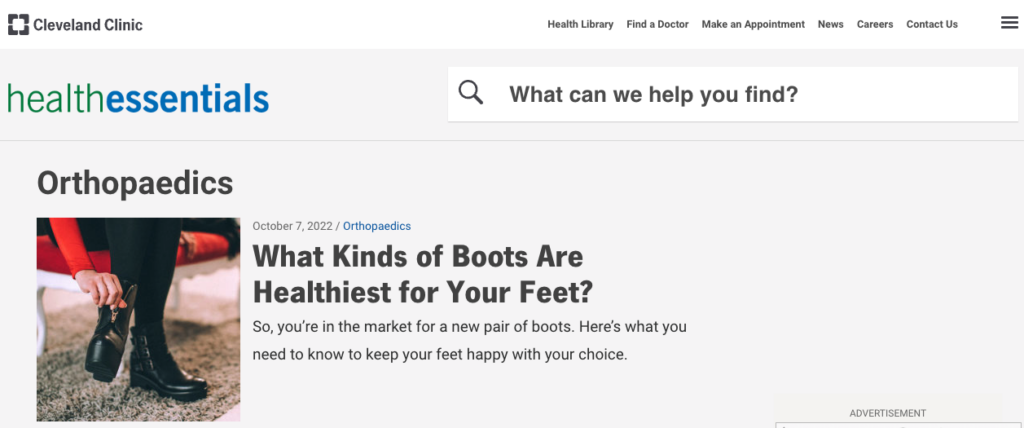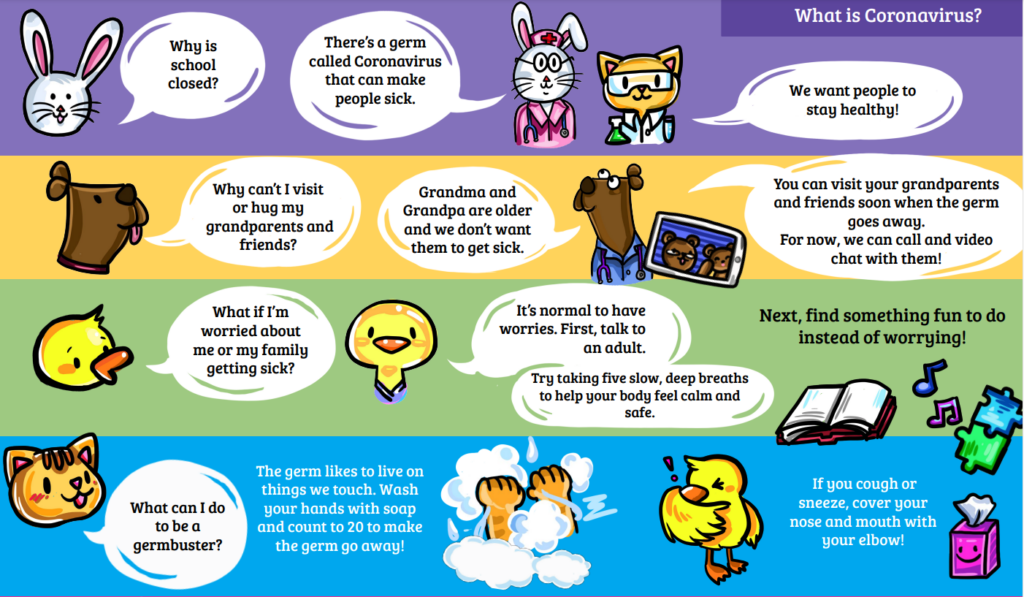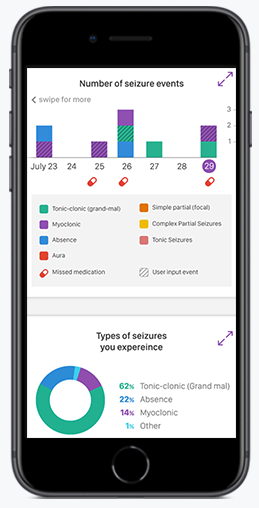Healthcare marketing has always been on the tail-end of adopting new marketing strategies (content marketing included), but an old-fashioned mentality is not necessarily the culprit. Unlike other industries, healthcare is very highly regulated. Sure, if mistakes are made in other industries, it could hurt the reputation of the company, but if a healthcare marketer makes a mistake, it could result in huge fines that could cripple the hospital’s or practice’s marketing efforts altogether.
In this post, we’ll take a look at how medical organizations are catching up in content marketing and where they can go next.
Using Content Marketing to Attract Patients Online
If patients are conducting health-related research online, there is clearly a market for content there. But with all of the information available online, how can a healthcare provider get their attention?
Let’s take a look at what successful healthcare organizations are doing.
Build a foundation of well-written, unique, informative content.
Patients are already searching for information online, but they can have trouble finding credible content. Hospitals, small practices, and individual doctors can be be that reliable online source in the same way that they are in face-to-face interactions. The key is creating original content that is well-written and thorough enough to answer patients’ questions.
The Cleveland Clinic has done a great job of providing useful information and creating a powerful content marketing example with its Health Essentials site. On this site, the Clinic provides content that answers common questions on topics ranging from health and wellness to medical innovation. It also offers content that dispels common myths and gives prevention tips. All of the content is reviewed and approved by medical experts before it gets added to the site, assuring readers that the information is indeed credible.

One of the clear lessons for health organizations wishing to create a content marketing hub is to structure review processes like the ones Health Hub uses to protect the organization from potential regulatory issues.
The Boston Children’s Hospital also offers a plethora of in-depth health content, including content specifically created for parents to share with young children. This content is different from the content written for parents in that it contains language a child would understand and uses engaging colors and illustrations.

Create “contagious content.”
“Contagious content” is content that is easily shareable via social media. Content shared via print media like brochures and magazines can be shared with others, but not nearly at the same rate as content online. Print media like brochures can be helpful in informing the patients sitting in your office, but they aren’t likely to reach many patients outside of your office the way that online content can. Many white papers and reports are available online, but most people don’t have the time to sit down and read them.
For this reason, some healthcare organizations are breaking their content down into easily-shareable infographics, Slideshares, and studies. The Mayo Clinic is a clear leader in creating healthcare content for a variety of audiences. Not only is the content easy to share and view on social media, but because the Mayo Clinic has established that it is a trustworthy brand, patients can rest assured that the Clinic is sharing legitimate information.
Cater to the mobile audience.
A 2015 Pew Internet Research study found 62% of smartphone owners have looked up medical information on their phones, and that percentage is even higher among those aged 18-29. This type of mobile usage does not appear to be slowing down anytime soon; if anything, those numbers are only increasing over time. This is why it is so important to appeal to the mobile audience with your content.
Having a mobile-friendly website is a critical first step, but many healthcare groups and hospitals are going beyond a mobile site and creating apps to help out their patients. An Accenture study of the 100 largest U.S. hospitals found that 66% of those hospitals had mobile apps for patients, with about 38% of those apps being proprietary applications created specifically for the hospital. That said, the study also points out that the apps may not be delivering on what patients actually want. Only 11% of those proprietary apps offered the ability to complete functions patients desire most, like accessing medical records, schedule and change appointments, and request prescription refills.
For example, the Johns Hopkins Hospital offers several different apps to help patients and caregivers manage different conditions, including epilepsy and heart health. These types of apps can be very helpful in adhering to treatment plans, and also in recording information to discuss with the doctor upon the next office visit. However, if your healthcare organization is considering creating an app for patients, it’s important to consider which features your patients might actually want, and not just what you think they need.
Get active on social media.
Contagious content is important, but to really connect with patients, you need to have an active presence on social media. Social media is a great place to share your contagious content, but beyond that, it gives you a chance to offer support to patients and allow other patients to connect with each other for support.
The MD Anderson Cancer Center has done very well in this regard. They use their Facebook page to share patient success stories, and are very responsive to patient comments, providing encouragement and information to help.
Another great example of this is at Cook Children’s Hospital. Not only do they have a great library of informative content for parents, but they are also active in sharing information on social media. For practices that deal with millennial patients (or in this case, millennial parents of patients), it is important to keep up with those expectations to have a more active online presence. Younger generations gather so much of their information online via search engines, websites, and social media, and this is a great way to ensure your patients are getting information they can trust. Dr. Justin Smith, who has led the content marketing and social media efforts at Cook Children’s joined our Paradigm Shift of Healthcare podcast to talk about the hospital’s content and social media efforts. To engage with patients online and encourage questions, the hospital takes on a more conversational tone on social media.
Look beyond articles for your content.
Sometimes if the market is saturated, the message can get lost in more traditional forms of content marketing like blogging and social media. In those cases, it might be helpful to take a less-traditional route to distribute your content.
Video is a good place to start, considering social networks like Facebook and Instagram are putting more emphasis on video content. People are watching videos more than ever before, with 96% of consumers increasing their online video consumption in 2020. It may even be a better way for patients and families to digest information–studies have found that people retain 95% of a message when delivered via video, compared to 10% when a message is text-only.
YouTube makes it very easy to create a channel and upload videos. YouTube videos can easily be shared on social media, creating another opportunity for “contagious” content. According to Pew Research Center, video can be a very effective medium–a 2013 study found that 47% of internet users shared photos and videos they found online. A number of healthcare organizations, including the Cleveland Clinic, Children’s Healthcare of Atlanta, and Spectrum Health have all found great success from video-based marketing.
In a similar strategy, NYU Langone Medical Center created a broadcast station on Sirius Satellite Radio called Doctor Radio. Show topics focus on a number of health-related issues, and patients can call in, email, or tweet their questions so that the doctors can answer during one of the shows. Doctor Radio is also active on Facebook and Twitter, allowing patients other ways of getting their questions answered. Obviously, it might not be feasible for every medical organization to go this route, but it might be possible to get a regular segment on a local radio or news station, or even record podcasts like a number of other hospitals do.
The Most Important Content Strategies Right Now
Content marketing is constantly evolving, and so should your marketing strategy. You need to stay up to date on the most current methods of content marketing in healthcare. These are some of the content strategies that are dominating the industry right now.
Greater Focus on Images and Videos
These days, a text-only approach to content just isn’t going to cut it. As we shared earlier in this article, people want to consume more content via video. Internet speeds and wireless connections continue to improve, increasing the demand for more “instant,” visual content. Infographics in particular can work very well in healthcare, and they can be produced fairly quickly on a regular basis. Visual content also makes more of an impact on social media–videos and infographics stand out more than text-only posts, making patients more likely to engage instead of scrolling by.
Plus, as we’ve established, people are more likely to retain the information when it’s delivered visually. Healthcare information can be complicated enough, yet it is critical that patients understand what is going on so that they adhere to recommended treatment plans. If video helps your patients understand and remember information, then it is worth the investment on many levels.
Online Reviews Are a Key Component of Search Ranking
Online reviews have been a key aspect of search ranking for hospitals and practices for at least the last few years. You might have great content on your website, but if your reviews aren’t on par with that of competitors, your search rankings may suffer. As such, it is important for practices of all sizes to start paying attention if you aren’t doing so already. Plus, if patients look up your practice or one of your physicians and see negative reviews, that could be the deciding factor between your practice and a competitor.
While you can’t post reviews about your own practice (that would violate terms of services on pretty much every online review platform in existence), you can do more to collect reviews from patients. Once you start collecting more reviews from patients, you’ll often find that the vast majority are positive and help decrease the impact of the few negative reviews you may get. Reputation marketing services make this easy by helping you collect reviews from patients during an office visit. Those reviews can then be published online (with the patient’s consent), helping you build up more positive reviews and make a great first impression online with potential patients.
Quality Over Quantity
Because the content market is so saturated, large quantities of content won’t get you very far if the quality isn’t there. The trend is shifting toward high-quality content. In other words, it’s better to take more time to produce high-quality, in-depth, original content than it is to put out tons of low-quality content or generic mass-produced patient education content just for the sake of publishing.
More Focus on Wellness
As a healthcare practice, it makes sense to focus a lot of your content on treatment and recovery. That type of content is certainly valuable to a number of people, but if you really want to widen your reach, you will need to focus more on wellness and prevention.
If a person doesn’t have a particular condition, they won’t be as interested in hearing about treatment for said condition. However, that same person would probably be interested in learning about how he or she could avoid it. While wellness information might not result in more appointments right away, it does help to further establish you as an authority on that particular topic, which adds more value to your practice in the eyes of patients.
Content marketing in healthcare is constantly evolving, and medical organizations of all sizes have a chance to stand out in their community with useful information for patients. The key to creating a message that resonates is finding the medium that works best for each audience.





